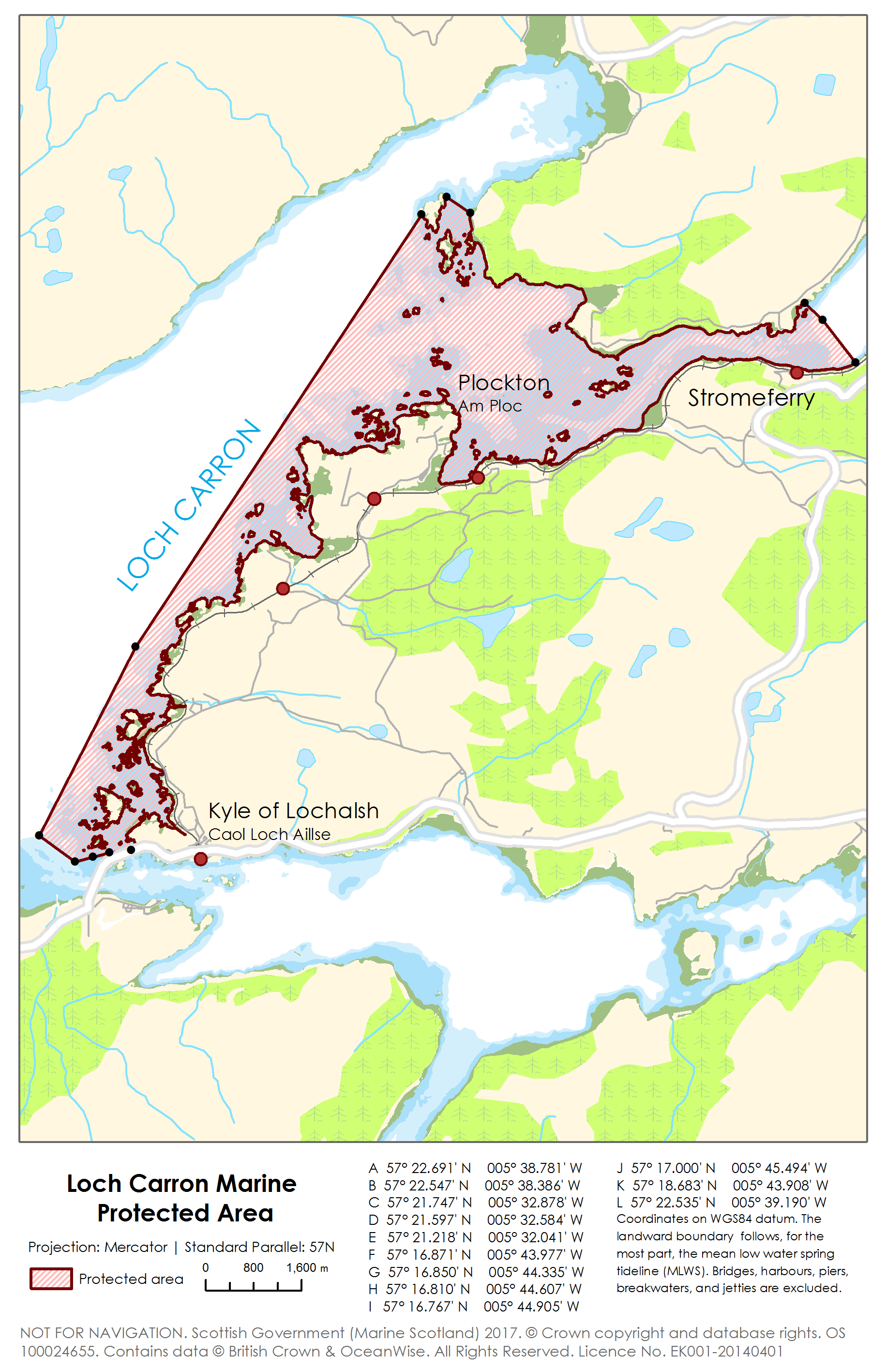Proposal to designate Loch Carron as a nature conservation Marine Protected Area (MPA), with an associated Marine Conservation Order (MCO)
Published responses
View submitted responses where consent has been given to publish the response.
Overview
The purpose of this consultation is to seek your views on the designation of Loch Carron as a Marine Protected Area as well as the associated Marine Conservation Order.
Under the Marine (Scotland) Act 2010, Scottish Ministers can designate a Marine Protected Area (MPA) on an urgent basis without publishing notice of their proposals or consulting those likely to be affected.
Loch Carron was designated as an MPA in this way in May 2017, following confirmation of damage to sensitive seabed habitats in the area. An urgent Marine Conservation Order (MCO) was put in place at the same time to manage fisheries activity.
The existing urgent MPA and MCO are still in place in Loch Carron. However, an MPA designated on an urgent basis only lasts for a maximum of two years. Normal
procedures for protected area designations, including public consultation, need to be undertaken to designate a permanent MPA.
Therefore, the two items below are the subject of this public consultation:
- Proposal to designate Loch Carron as a nature conservation Marine Protected Area (MPA) to protect flame shell beds and maerl beds with an updated site boundary.
- Proposal to make a Marine Conservation Order (MCO) to further the stated conservation objectives for the Loch Carron MPA
Through this 12-week public consultation we are seeking views on:
- Support for designating Loch Carron as a MPA to replace the existing one;
- The scientific case underpinning the proposal, the proposed protected features, and the site boundary;
- Draft conservation objectives and management advice;
- The draft MCO which proposes to prohibit bottom-contacting mobile fishing gears within the MPA to replace the one currently in force; and,
- The draft Business and Regulatory Impact Assessment of the proposed designation and management measures.

Why your views matter
This page serves as notice for two purposes:
- Under section 75 of the Marine (Scotland) Act 2010 that Scottish Ministers propose to designate Loch Carron as a nature conservation Marine Protected Area (MPA).
- Under section 87(6) and (7) of the Marine (Scotland) Act 2010 that Scottish Ministers propose to make the Loch Carron Marine Conservation Order to further the stated conservation objectives for the proposed Loch Carron MPA.
In accordance with section 87(7)(b) of the Marine (Scotland) Act 2010, a copy of the draft Order can be downloaded or inspected at:
Scottish Government
1A South
Victoria Quay
Edinburgh
EH6 6QQ
Please email Marine_Conservation@gov.scot in order to make arrangements if you would like to inspect the Order in person.
Additional information:
The boundary of the Loch Carron MPA and the proposal to include maerl beds, another diverse and particularly sensitive seabed habitat as a feature of the site, were developed by SNH in discussion with Marine Scotland following new survey work in 2017.
Maerl beds are one of the inshore Priority Marine Features for which work is currently underway to identify where additional fisheries management is needed in Scottish waters.
Related documents
In addition to the information provided in the overview section (see above), Marine Scotland and Scottish Natural Heritage (SNH) have produced a number of supporting documents and links which can be found below.
Events
-
Loch Carron Village Hall (Small Hall)
From 22 May 2018 at 14:00 to 22 May 2018 at 20:00 -
Plockton Village Hall
From 23 May 2018 at 14:00 to 23 May 2018 at 20:00
Interests
- Environment and Climate Change
- Marine and Fisheries

Share
Share on Twitter Share on Facebook